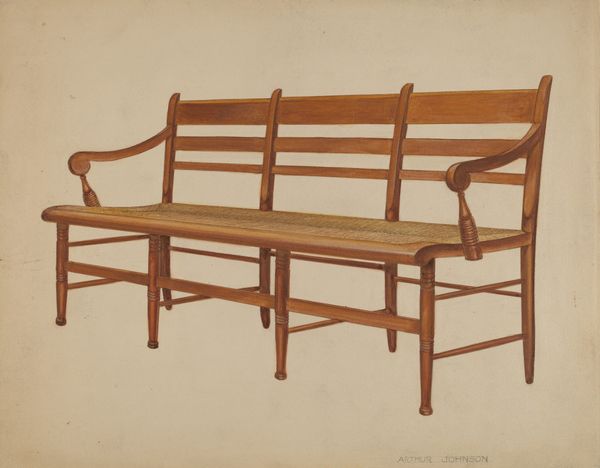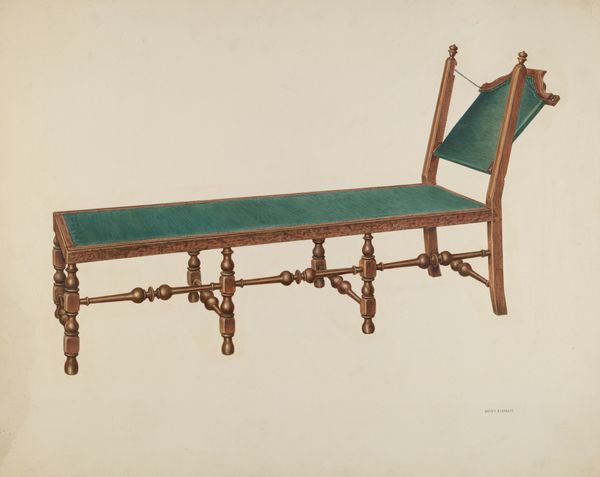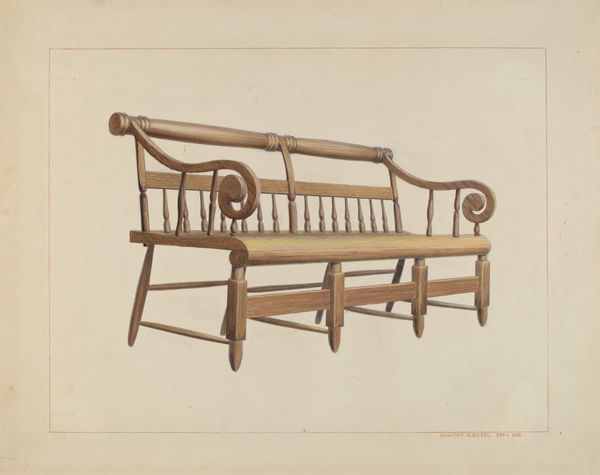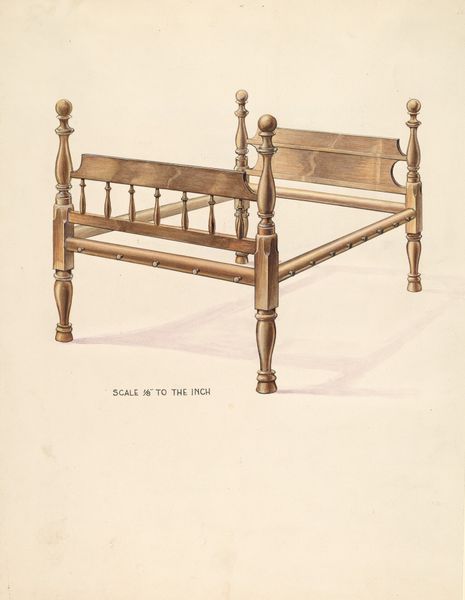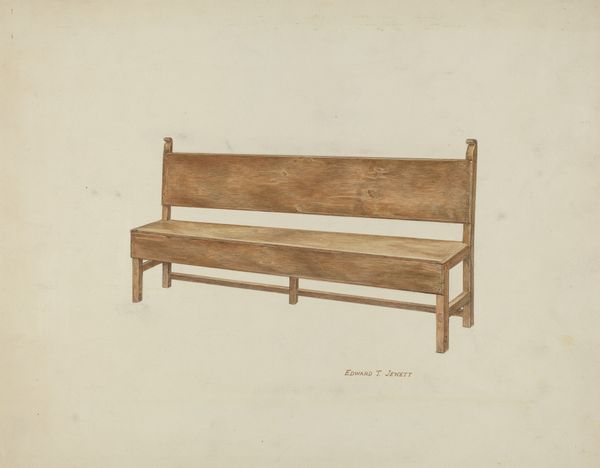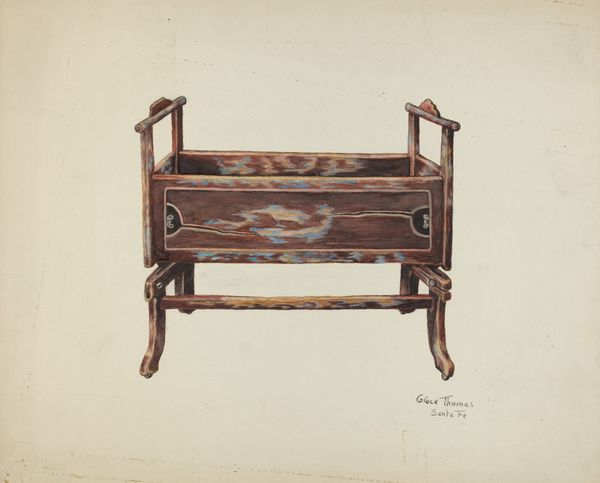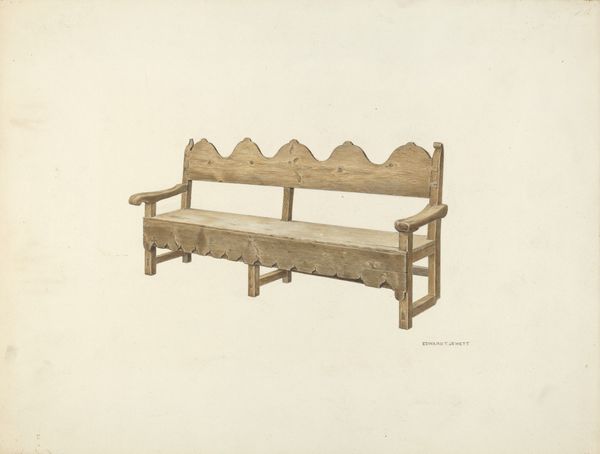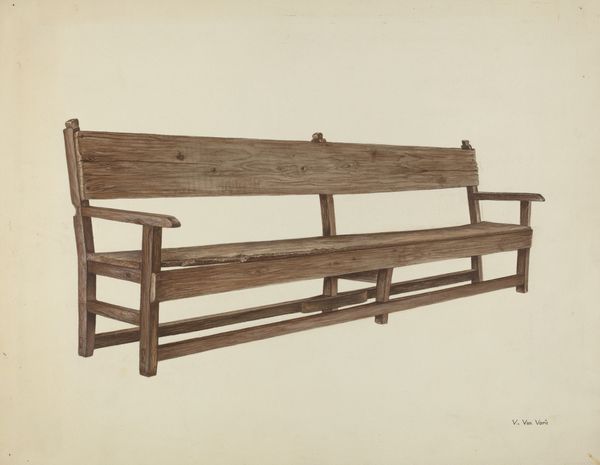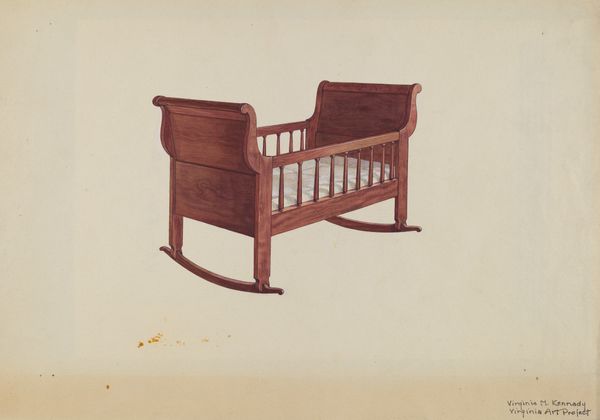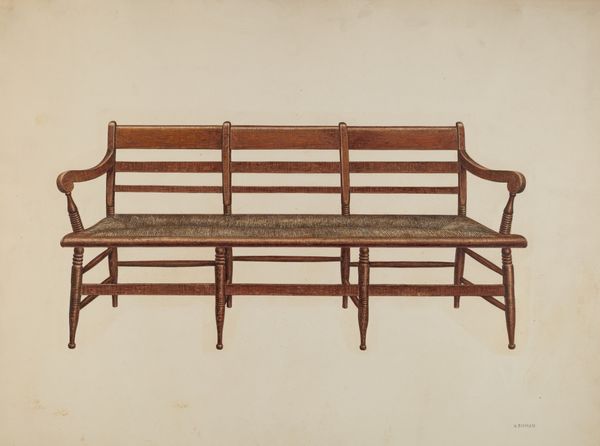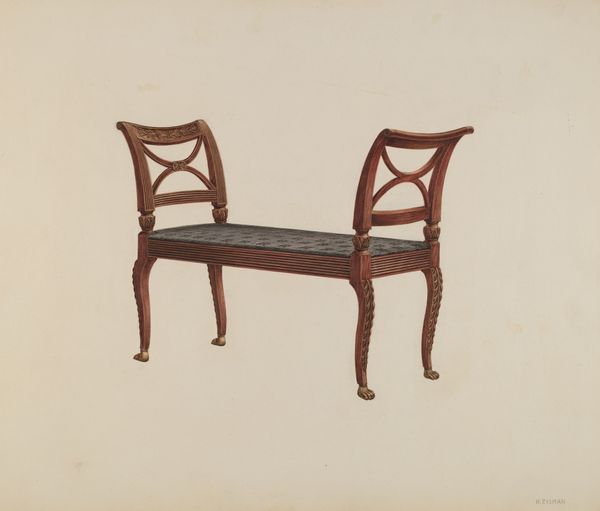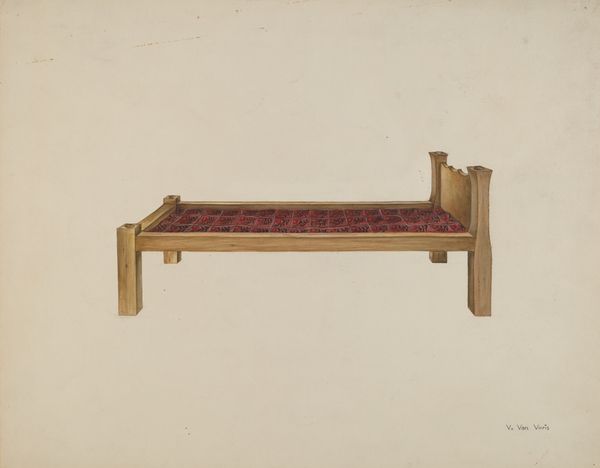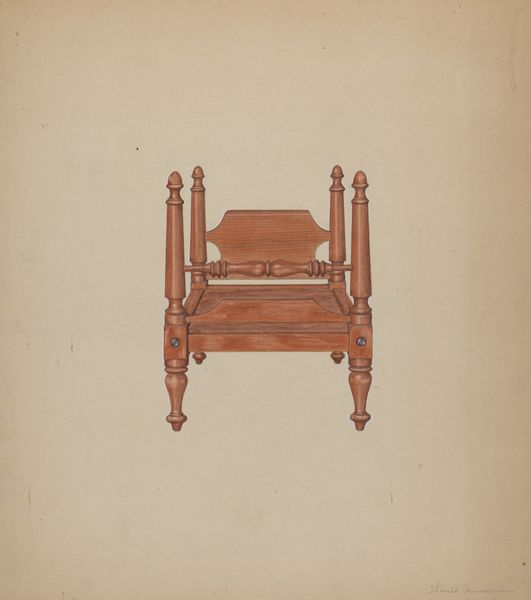
drawing, watercolor
#
drawing
#
water colours
#
watercolor
#
watercolour illustration
#
academic-art
#
watercolor
Dimensions: overall: 24.7 x 35 cm (9 3/4 x 13 3/4 in.)
Copyright: National Gallery of Art: CC0 1.0
Editor: Here we have Leslie Macklem’s "Doll Cradle," a watercolor and ink drawing created around 1939. It feels very precise and formal. What strikes me most is how the artist focused on replicating all of the shapes and the contours in great detail, but using such a spare palette. How do you interpret this work, considering its technical presentation? Curator: From a formalist perspective, the work presents an interesting study in line and form. Consider the repetition of the turned wood detailing, creating a rhythmic visual texture throughout the piece. The artist meticulously renders each element, emphasizing symmetry and balance within the composition. What do you make of the negative space, particularly within the headboard design and around the legs? Editor: The negative space adds an interesting counterpoint, almost like a breath within the composition. I noticed the sharp edges, too, especially at the top of the frame and the bedposts that are offset against those soft shapes. It gives a clear structural logic to the drawing overall. But doesn't this meticulous detail border on mere documentation rather than expressive art? Curator: Documentation, perhaps, but also a deep engagement with the object’s inherent structure. The work asks us to consider the craftsmanship, the pure forms present in the cradle's design, irrespective of its function or cultural context. We are asked to see this item beyond utility, as an arrangement of carefully related geometric forms. What do you see as the focal point and why? Editor: For me, it's the headboard with that intricate rounded trim, drawing the eye upward. Now I’m viewing the negative space with the light and shadow as integral to the composition instead of just a backdrop. Curator: Exactly. It shows the effectiveness of a structured analysis of the artwork's different attributes. Focusing solely on elements such as line, color, and form gives us another way to explore an artwork’s artistic complexity. Editor: That’s true. Now I have a better sense of the purpose in rendering every last contour. Thanks for clarifying how formal analysis enhances one’s experience of viewing art.
Comments
No comments
Be the first to comment and join the conversation on the ultimate creative platform.
